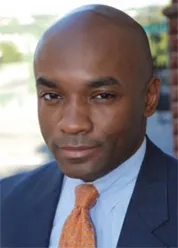The American Way of Excluding
Modern America has an uneasy attitude toward exclusivity. Americans prefer to think of themselves as a loving family that welcomes the tired, the poor, and the tempest-tost rather than as a huge amalgam of elitists. But while American society is more inclusive than it was 20 years ago on issues like race, gender, and sexual orientation, there are still countless situations, both appropriate and inappropriate, in which exclusion takes place.
Lior Strahilevitz, Deputy Dean and Professor of Law, has written a book that looks at how Americans practice and experience exclusion. But rather than revisiting the most traditionally recognized methods—trespassing laws, quotas, and the like—he has chosen to concentrate on more subtle approaches to creating homogeneity.
In Information and Exclusion (Yale University Press, 2011), Strahilevitz argues that the amount of information available to excluders and those they exclude dictates which approach to exclusion will be taken. He further argues that by manipulating the information equation, governments can encourage or combat exclusion.
For example, Strahilevitz cites studies that show that employers who conduct criminal background checks are more likely to hire African American men than those who do not. African American men are more likely than Caucasian men to have criminal records, but employers in blue-collar industries systematically overestimate the magnitude of the racial differences. As a result, Strahilevitz argues that if the government makes accurate criminal conviction information freely available to employers, the job prospects of African American men as a group will improve. Privacy protection for criminal history information may create perverse dynamics. Other mechanisms for promoting the reintegration of ex-offenders into the workforce, like tax subsidies for employers, will be superior on this dimension.
“There are two parts to the book,” Strahilevitz explains. “The first part explains how both the accessibility of information and the sort of information that is available influence the mechanisms that people use to create exclusivity. The second part looks at how the state can alter the sorts of exclusivity that are created and the sorts of strategies that are chosen in the private sector.”
Strahilevitz is interested in a breadth of topics beyond race and criminal history. The book provides an entertaining and comprehensive review of various types of exclusion—from all-Catholic planned communities to nineteenth-century British workhouses to majority-deaf legislative districts. The first part of Information and Exclusion explains three mechanisms for exclusion. The first, which Strahilevitz has called the Bouncer’s Right, is the landowner’s right to discriminate among various parties, permitting some to enter or use the land while keeping others off the property entirely. “Like the bouncer at a nightclub, the owner must exercise discretion as to who can utilize the resource, and the criteria for exclusion need not be transparent.”
One example he cites is that of prejudice against lawyers in New York City in the 1980s. Attorneys at that time regularly had difficulty finding apartments because landlords feared leasing to people who were likely to invoke their rights under New York’s laws, which were strongly protective of tenants.With little available information about individual prospective tenants, landlords engaged in statistical discrimination that imposed a collective sanction on all members of a group. New legal rules to prohibit discrimination against lawyers made little difference. It was only after commercial databases began providing landlords with cheap and quick access to information about prospective tenants’ involvement in previous litigation that discrimination against lawyer-renters abated. Prior involvement in lawsuits was a better proxy for future involvement in lawsuits than one’s profession.
Strahilevitz calls the second mechanism Exclusionary Vibes, which involves the landowner’s communication to potential entrants about the character of the community’s inhabitants. These communications tell potential entrants that certain people may not feel welcome if they enter the community in question, and may suggest to the potential entrant that the owner has the legal right to exclude them, even if that is not the case. The exclusionary vibe strategy predominates when it is difficult for the excluder to determine which of the prospective entrants are desirable and which are undesirable. It essentially delegates the choice about who should be excluded to the prospective entrants themselves. It exists entirely independent of trespass law.
Naturally, exclusionary vibes can be communicated in a number of ways—from the choice of models in advertisements to the type of scenario selected for a massively multiplayer online game. Even seemingly innocuous items like the names chosen for institutions and communities can send out a vibe that welcomes some and repels others. For example, a college may change its name to attract a different mix of students. The University of the South recently decided to de-emphasize the “south” part of its name—in an effort to draw students from other regions of the country, who might have harbored negative stereotypes about the southern states. The university now emphasizes its nickname, Sewanee, in its marketing materials, and has moved its website to www.sewanee.edu.
Exclusionary vibes come in many shapes and sizes. Sometimes, they do not seem to sort people effectively: think of the new TSA queues for “casual travelers” and “expert travelers” at many American airports. Other times, exclusionary vibes can be as effective as bouncer’s exclusion. Strahilevitz’s book describes an exclusionary vibe mechanism in which he participated while attending college.
“I was president of the campus housing cooperative during my undergraduate days at UC Berkeley. Berkeley has two primary systems of communal student housing—the fraternity/sorority system and the cooperative system. The fraternities and sororities had a rush and pledge process that turned away many students who wanted to live in particular houses. The cooperative system took all comers, and assigned spots in the most popular houses on the basis of a lottery. A lot of people in the cooperatives took pride in how inclusive we were, in contrast to the Greek system. But it always struck me that the cooperatives houses were just as homogenous as the fraternities and sororities. Each house had a distinct image that it projected to the world, and students seeking a house tour might be welcomed enthusiastically or with disinterest, depending on the judgments that the person answering the door made about the student ringing the doorbell. That observation planted a seed that eventually grew into this book.”
The third mechanism of exclusion that Strahilevitz identifies in his book is the Exclusionary Amenity. An exclusionary amenity is an item or service that is expensive enough, and visible enough, to send a message that only those interested in paying for and using that amenity will be interested in becoming part of the community with which the amenity is bundled.
Perhaps the most striking example of an exclusionary amenity is the golf course that is part of a housing development. Golf was historically associated with racial exclusion because it was long played at clubs that had discriminatory policies. During the 1980’s and early 90’s, golf was the most racially segregated mass-participation sport in America. Thus, building a development around a golf course and mandating that all homeowners become members of the golf club could result in a racially segregated community. Strahilevitz discovered that a sizeable portion of the people who bought homes in mandatory membership golf communities played no golf, and wondered what it was they were purchasing. Fascinatingly, African Americans’ participation in golf spiked almost overnight after TigerWoods burst onto the professional golf scene. As golf courses became an amenity that increasing numbers of African Americans were willing to pay for, the mandatory membership golf community became a less powerful exclusionary amenity.
Strahilevitz points out that the law treats the different exclusionary mechanisms quite differently, even though they can be close substitutes for one another. “In the realm of racial discrimination, it appears that the law treats exclusionary vibes with great hostility, treats bouncer’s exclusion with substantial hostility and leaves exclusionary amenity strategies largely unregulated.”
“The payoff from the book is to show that the government has a lot of tools at its disposal, which are not necessarily the ones policy makers think of using,” Strahilevitz notes. “Traditional lawsuits used to enforce antidiscrimination laws have a very important role to play, but there are lots of false positives and false negatives associated with them. Where we encounter pernicious forms of racial discrimination, we shouldn’t be satisfied with these existing approaches.We should use a multiplicity of strategies to combat obnoxious misbehavior. That includes traditional antidiscrimination laws, but also government efforts to use information to mitigate the prevalence and consequences of racial exclusion. It also includes legal scrutiny of choices to bundle exclusionary amenities with jobs or houses. It may even require using government subsidies to help landlords, employers, or real estate developers get beyond the crude proxies that no longer make sense in the information age.”
Information and Exclusion will be available from Yale University Press in June.



